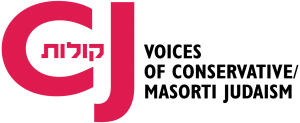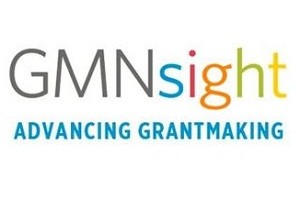 With new focus on ‘21st century skill-set,’ camp is fast becoming another data point on a teen’s resume.
With new focus on ‘21st century skill-set,’ camp is fast becoming another data point on a teen’s resume.
When Barbara Rose Welford was looking to enroll her teenage daughter in summer camp, color war and cookouts weren’t enough to catch her eye.
“I’m not a helicopter mom, but I wanted an environment that will position Sarah to achieve her future goals,” said Welford, whose 14-year-old daughter is especially fond of science. “My kid will want to go to MIT one day. I want to make that possible.”
Hyper aware of the competition that will likely face her daughter when college applications roll around in a couple of years, Welford, who is Jewish, opted for theUnion For Reform Judaism’s (URJ) Six Points Sci-Tech Academy, a specialty camp in the Boston suburbs that focuses on high-tech education.
“A parent with an ear to the ground won’t treat summer like time off,” she warned.
Digital marketing, video game design and robot programming might very well be the new lanyard making and bug juice. As competition for high school and college heightens, Jewish camps are shifting focus to equip campers with a “21st century skill-set,” according to Jeremy Fingerman, CEO of the Foundation for Jewish Camp (FJC).
For parents’ eager to ensure their child a spot in a top school, specialty camps that focus exclusively on one skill are becoming increasingly appealing, according to Fingerman.
“Campers are looking for a way to differentiate themselves in the market,” said Fingerman, who said the trend toward specialty camps has been growing steadily in recent years. “Skill building programs give campers that necessary edge in high school or college applications. Parents, who are investing significant monetary discretion in camp, want kids to do more than just have fun.”
Camp Inc., a Jewish specialty camp in Boulder, Colo., grooms campers to become first-class entrepreneurs. Mission statement workshops, branding tutorials, handshake practice sessions, digital marketing prep and “Shark Tank”-style pitch competitions have replaced lounging by the lake or hitting around a baseball.
“These kids want to challenge themselves with more than the traditional overnight camp has to offer,” said Camp Inc. director Josh Pierce, a successful entrepreneur who has built and sold several companies. “We definitely deliver.”
Since its 2014 launch as part of FJC’s Specialty Camps Incubator Program, the camp has more than doubled in size, according to Pierce. Attracting nearly 200 campers from Israel, Canada, France, Uruguay and 15 states for the 2015 summer sessions, the camp offers an intensive two weeks culminating in a business pitch to a panel of real investors.
“They’re not just going to camp to have fun — these kids are learning real-world skills from top-notch professionals,” said Pierce, explaining how the campers meet with CEOs and working entrepreneurs. “Aside from the networking opportunities, we pitch camp to campers and staff as a great college resume builder.” The 15 counselors are all business undergraduates or MBA-candidates, he said.
The one glitch in Camp Inc.’s business model: campers are not coming back to camp if they succeed in their business ventures, Pierce said.
“It’s a catch-22,” he said, laughing. “If you create great entrepreneurs, you can’t expect them to come back.”
Though the accomplishments of specialty campers stack up, the question persists: is something lost from the camp experience when the goal of fun is ousted?
Rabbi Isaac Saposnik, executive director of Camp JRF, a traditional Jewish overnight camp in the Pocono Mountains, thinks so.
“There are such heavy expectations placed on kids growing up today — getting ready for high school, for college, for grad school, for that first job,” said Rabbi Saposnik, a member of the Reconstructionist movement. “We, as a summer camp program, entice kids to stay kids a little bit longer, to buck that trend of ‘what’s next?’” he said.
Camp JRF makes an effort to pull campers away from the “rat race” of every day life, he said.
“We teach skills, just not resume skills,” he said.
But Sandy Edwards, associate director of the Jim Joseph Foundation, the grant making foundation behind the specialty camps incubator, thinks specialty camps are the future.
“The trend in the field is clear: camps are embracing specialties,” said Edwards, who helped launch the incubator program in 2009 with five experimental new camps. “Families are attracted by specialties, because it gives their children a defined area of expertise.”
Greg Kellner, director of URJ Six Points Sci-Tech Academy, one of four camps chosen to be in the second incubator cohort, said the new demand is to provide campers with “advanced skills.”
Beginning each morning with the Boker Big Bang, a science experiment to kick off the day, days are filled with video game design, robotics, digital film production, software programming and coding.
“We don’t tell our campers that going here will get you to a particular spot, but it has in the past,” said Kellner, who reports that campers have used what they learn at camp to bolster their middle-school or high-school resumes.
Last year, 159 campers enrolled. This year, Sci-Tech Academy is juggling over 300 applicants.
“The high level of instruction campers receive is unique,” he said, describing one young woman who came to camp knowing nothing about robotics, and now heads the robotics club at her middle school. “They’re gaining tangible skills. It’s an investment in the future.”
While camp is steadily becoming a more high-stakes endeavor for campers, the same is true for counselors. While working at a camp during high school and even college used to be a respectable summer job, the pressure today to list impressive internships and real-world experience is tremendous, said Efrat Levy, board member of Camp Shomria, a progressive Zionist youth camp in the Catskills.
Levy, a deep believer in the value of camp for both campers and staff, is currently working to create a program where Camp Shomria staff members will be able to receive college credit for their work. The initiative is the first of its kind.
“We’re losing staff because of the pressure young adults feel to gain resume-building experience or tangible credit for their time,” said Levy, a one-time camper at Shomria herself. “We’re fighting to add quantifiable value to the camp experience so we can retain more competitive counselors.”
Levy, a professor of education at SUNY Empire State College in upstate New York, is developing a syllabus of six courses relevant to what counselors accomplish at camp. Child development, experimental education, and curriculum development are all part of the curriculum.
“Camp can be the new internship,” she said. “Counselors learn just as much, if not more.”
Mark Gold, the director of JCamp180, a program of the Harold Grinspoon Foundationthat aims to enhance the long-term effectiveness of nonprofit Jewish overnight camps, takes imparting “real-life” skills one step further — to camp directors and board members.
“Camp directors are not just blowing a whistle and swimming in a lake — they are running a multimillion-dollar organization,” said Gold. The need to “professionalize” camps is critical to long-lasting organizational success, he said.
“Camp needs to be run like a business, not a recreational part-time engagement,” he said. “That needs to start at the top. Trustees and professionals need to impart to first level management (counselors) that their job is more than playing softball.”
But according to Gold, professionalizing camp is not so much a change as a reboot.
“This is what camp was always supposed to do: impart real-world skills,” he said. “We just want to make sure that camp is doing its job.”
Source: “Camp, The New Internship,” The Jewish Week, May 27, 2015
![]() The Jewish Federation of San Diego County has announced the launch of the community-based Center for Volunteer Service Learning, an initiative designed to catalyze more immersive and ongoing service learning opportunities for San Diego teens.
The Jewish Federation of San Diego County has announced the launch of the community-based Center for Volunteer Service Learning, an initiative designed to catalyze more immersive and ongoing service learning opportunities for San Diego teens. in building Jewish community.
in building Jewish community.
 The
The  Families in Colorado raising Jewish children have more opportunities to participate in Jewish life due to the Harold Grinspoon Foundation.
Families in Colorado raising Jewish children have more opportunities to participate in Jewish life due to the Harold Grinspoon Foundation. This summer, the Jewish United Fund of Metropolitan Chicago launches a new initiative to increase the depth and quality of programming for Chicagoland Jewish teens – including the creation of an immersive Spring Break program to pilot next year.
This summer, the Jewish United Fund of Metropolitan Chicago launches a new initiative to increase the depth and quality of programming for Chicagoland Jewish teens – including the creation of an immersive Spring Break program to pilot next year. Five local day schools have collected more than 21 million ways to make Jewish education more affordable in Los Angeles.
Five local day schools have collected more than 21 million ways to make Jewish education more affordable in Los Angeles.
 Last month, a group of 15 different organizations (15!)
Last month, a group of 15 different organizations (15!)  With new focus on ‘21st century skill-set,’ camp is fast becoming another data point on a teen’s resume.
With new focus on ‘21st century skill-set,’ camp is fast becoming another data point on a teen’s resume. The Jewish Foundation of Cincinnati (JFC), is a member of the Jewish Teen Education and Engagement Funder Collaborative, a group, comprised of 15 national and local funders committed to investing in community–based Jewish teen education initiatives. Recently this organization released a commissioned case study detailing insights and lessons learned from their first two years working together. The case study, Finding New Paths for Teen Engagement and Learning: A Funder Collaborative, was prepared by Informing Change, and is designed to inform other co–funding and shared learning efforts both within and outside of the Jewish philanthropic community.
The Jewish Foundation of Cincinnati (JFC), is a member of the Jewish Teen Education and Engagement Funder Collaborative, a group, comprised of 15 national and local funders committed to investing in community–based Jewish teen education initiatives. Recently this organization released a commissioned case study detailing insights and lessons learned from their first two years working together. The case study, Finding New Paths for Teen Engagement and Learning: A Funder Collaborative, was prepared by Informing Change, and is designed to inform other co–funding and shared learning efforts both within and outside of the Jewish philanthropic community. cognition of its success infusing Israel into a greater part of camp culture and overall experience, Camp Pembroke in Pembroke, was awarded the inaugural “Goodman Prize for Excellence in Israel Education at Camp” by the iCenter for Israel Education, Foundation for Jewish Camp (FJC), and the Lillian and Larry Goodman Foundations.
cognition of its success infusing Israel into a greater part of camp culture and overall experience, Camp Pembroke in Pembroke, was awarded the inaugural “Goodman Prize for Excellence in Israel Education at Camp” by the iCenter for Israel Education, Foundation for Jewish Camp (FJC), and the Lillian and Larry Goodman Foundations. A funder collaborative set up to invest in community-based Jewish teen education initiatives has been “strikingly successful” in its first two years, with all participants reporting a high level of satisfaction, a case study commissioned by the
A funder collaborative set up to invest in community-based Jewish teen education initiatives has been “strikingly successful” in its first two years, with all participants reporting a high level of satisfaction, a case study commissioned by the